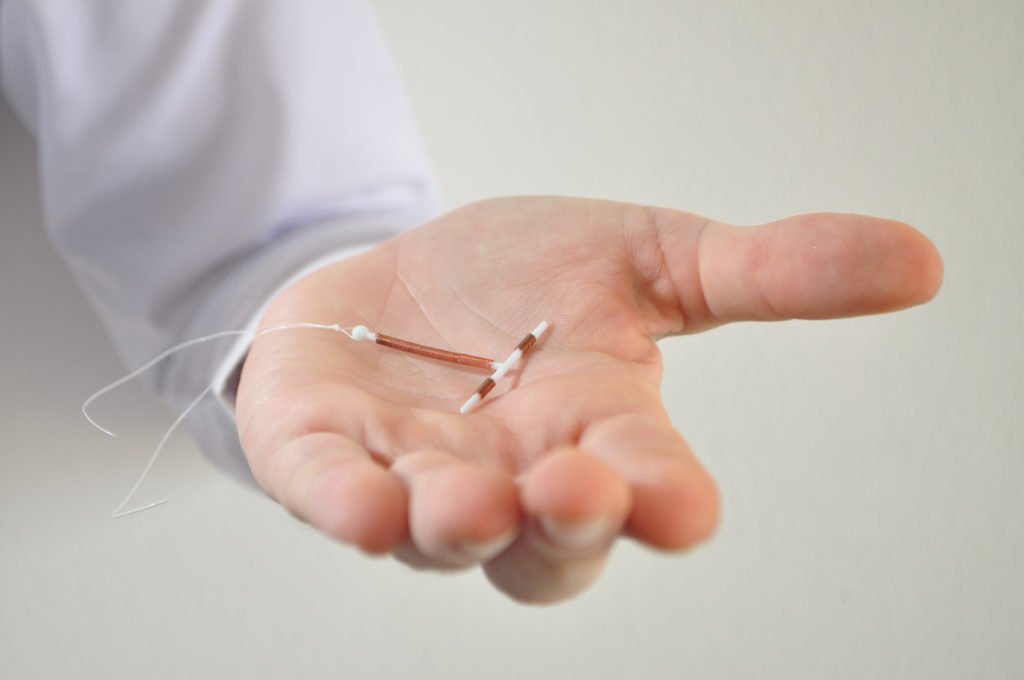Updated
The Paragard T 380A IUD is more than 99% effective at preventing pregnancy. But if this hormone-free copper intrauterine device malfunctions – such as by fracturing or perforating the uterus – the risk of unwanted pregnancy increases.
Paragard users are seeking large settlements from Teva Pharmaceuticals and CooperCompanies for the injuries they suffered, largely due to the IUD breaking during removal. Patients may require painful and invasive surgery to retrieve the broken pieces – if they are retrievable at all. These broken IUDs may cause serious complications, including ectopic pregnancy, pelvic infections, and infertility.
In this article, our Paragard IUD lawyers discuss:
- 1. Are Paragard IUDs more effective than other contraceptives?
- 2. Is it reversible?
- 3. When does it fail?
- 4. Can the Paragard IUD prevent STDs?
- 5. What are the side effects?
- 6. How long has the Paragard IUD been available?

There is a less than 1% chance of unintended pregnancies while using the Paragard IUD.
1. Are Paragard IUDs more effective than other contraceptives?
If nothing goes wrong, the Paragard T 380A intrauterine contraception is among the most effective methods of birth control. And this copper IUD takes full effect immediately after the IUD insertion into the uterus.
The only other comparably effective contraceptive methods with a less than 1% failure rate are:
- Hormonal IUDs (these types of IUDs include Mirena, Liletta, Skyla or Kyleena – which use progestin / levonorgestrel),
- Hormonal implants (Nexplanon), and
- Sterilization (tubal ligation)
Birth control methods with a 94% to 99% effectiveness rate for pregnancy prevention include:
- Injections (Depo-Pravera /medroxyprogesterone),
- Hormonal birth control pills (such as Ortho Tri-Cyclen, Loestrin, or Seasonique)
- Patches (Ortho Evra), and
- Rings (NuvaRing)
Finally, the risk of pregnancy is 72% to 88% with these birth control options:
- Condoms
- Sponges
- Diaphragms
- Cervical caps
- Spermicide
- The rhythm method / natural family planning (unprotected sex during infertile periods of the woman’s menstrual cycle)
- The withdrawal method
- Emergency contraception (Plan B / the morning after pill)1
2. Is it reversible?
Yes, Paragard is reversible contraception. Although it is a long-acting contraceptive that can be used for 10 years, women should be able to get pregnant right after IUD removal (barring certain medical conditions and other extraneous circumstances).
However, defects with the IUD are compromising some women’s fertility. During the removal (explant) process, some devices break apart, leaving the fractured arms of the IUD inside the uterus. And in many of these cases, doctors are unable to retrieve the broken pieces. This can cause a host of maladies, including infertility.2
3. When does it fail?
The Paragard IUD’s copper wires work by thickening cervical mucus in the uterine cavity, which keeps sperm from traveling through the Fallopian tubes to fertilize an egg. But the device loses its 99%-plus efficacy when it:
- Migrates
- Fractures
- Pierces the uterine wall
- Expels from the uterus
Paragard users who believe they may be pregnant should contact their obstetrician/gynecologist or other women’s health care provider right away.
4. Can the Paragard IUD prevent STDs?
No. IUDs do not protect against sexually transmitted infections. Only the male and female condoms can help protect against such STIs as herpes, HPV, genital warts, hepatitis B, chlamydia, syphilis, HIV, and gonorrhea.
5. What are the side effects?
If everything goes right, there should not be any. Paragard implantation takes only a few minutes in a doctor’s office requiring only a speculum and insertion tool. But sometimes women have a difficult time during implantation and experience cramping, nausea, and lightheadedness. And in the first three months, some users experience heavy bleeding.
Other, rarer side effects include:
- Anemia
- Dyspareunia (painful intercourse)
- Menstrual cramps and pelvic pain
- Body aches
- Vaginal infections
Potential complications include:
- PID (pelvic inflammatory disease). This is an infection of the reproductive organs and possibly other, nearby organs. Most IUD users who develop PID do so within 20 days of insertion. Symptoms of PID are fever, chills, excessive bleeding, foul-smelling or unusual vaginal secretions, pain, and pain during sex. Doctors treat PID with antibiotics. But left untreated, it can lead to infertility, long term pain, an ectopic pregnancy following unprotected sex, and possibly death. In extreme cases involving a uterine rupture, patients require a hysterectomy.
- Organ perforation. IUDs are pointy, sharp objects. If they travel and embed in the uterus, they can cause serious tissue damage and infection. The device becomes less effective at preventing pregnancy as well.
- Expulsion. Some women report having their IUD literally fall out of their uterus into their vagina. Women who have never been pregnant are more likely to experience this. Not only does this leave the woman vulnerable to getting pregnant. It can also cause internal damage.
- Breaking during removal. The subject of many of the current lawsuits against the Paragard maker stems from the device breaking while it is being removed. Having broken pieces left behind in the uterus can wreak havoc on the women’s comfort and reproductive health.
6. How long has the Paragard IUD been available?
In 1984, the FDA (Food and Drug Administration) approved the Paragard IUD. It was made by Teva Pharmaceuticals. Though Teva has since sold the device to Cooper Companies for over one billion dollars. Note that the FDA regulates Paragard as a drug and not as a medical device.3

Call our Paragard IUD lawsuit attorneys. We offer free consultations to victims throughout the United States.
Legal References
- Paragard website (official site).
- See Michelle Llamas, Why Lawyers Are Talking About the Paragard IUD, Drugwatch (April 7, 2020).
- See note 1.
- Teva Pharma to sell more women’s health assets for $1.38 billion, Reuters (September 18, 2017).
